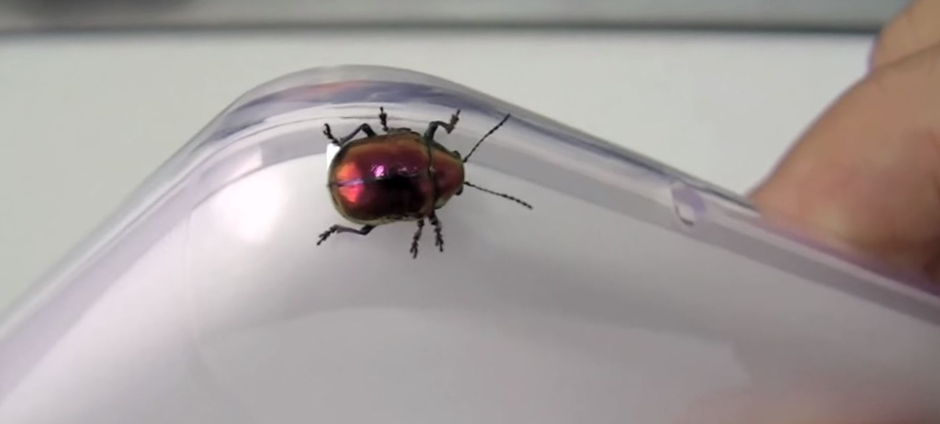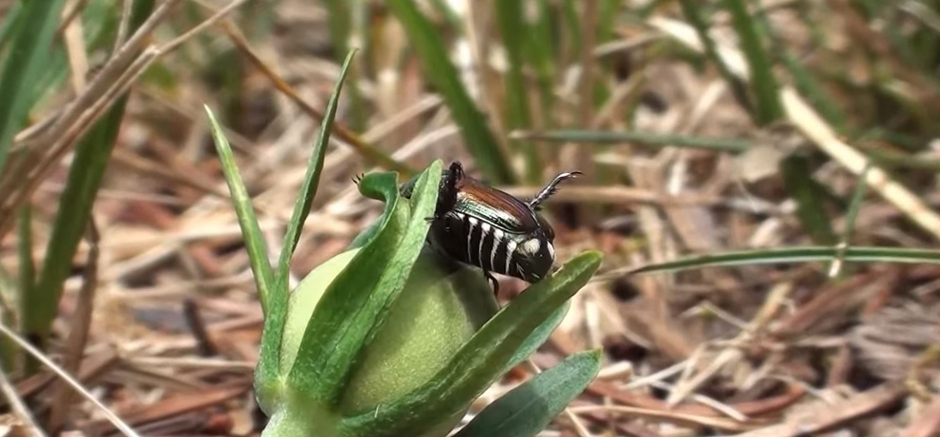How to Get Rid of Beetles
An educational guide to help you get rid of unwanted Beetles.
How To Get Rid Of Beetles
Beetles are actually part of the largest insect order in the world and there are over a quarter million different beetle species worldwide. North America alone has over 25,000 species, but don’t worry; you deal with most of them in the same way.

Recognizing Beetles
Before you can get rid of beetles, you need to confirm that these are indeed the insects you are dealing with. Surprisingly enough, many people will mistakenly think that a cockroach is a beetle, but this can be prevented by examining the wings. Beetles will have very hard front wings that may seem more like a shell. When folded, these front wings cover the back ones. To separate beetles from other insects, keep in mind that these are bad fliers.
Why Get Rid Of Beetles
Some people are in favor of trying to live peacefully with insects, even those inside their homes in some cases. While this does make sense in certain situations, it is not ideal for beetles in the house. Carpet beetle larvae eat feathers and natural fibers, meaning that they tend to damage fabrics like wool. There are also powderpost beetles that destroy bamboo and hardwoods and grain or flour beetles that can attack your food. Even in your garden, June beetles or grubs can attack grass roots. Some beetles are beneficial, however, including ground beetles and lady beetles (ladybugs). As a general rule, you should always remove beetles that infest fabric, attack food products, or destroy wood.
Physically Remove The Beetles
Perhaps the most obvious method of how to get rid of beetles is to physically remove them, although it won’t work for all species. Your pest expert can let you know if physical removal, such as with a vacuum, will work for the particular species you are dealing with. Vacuuming can be used on floors as well as furniture and can be highly effective against certain types of insects, including carpet beetles. You may have to do this daily or more often for the first week, though, so be ready to put in some work. You can also find hormone-based glue traps and similar items for beetles that can be placed in strategic areas; just be aware that you will likely need a lot or to use this with other methods.
Dispose Of Infested Materials
If you are dealing with carpet beetles or another variety of these insects that eats clothing and upholstery, you should start by taking care of the infested materials. Anything that is heavily infested should just be tossed as you are unlikely to get all of the beetles and the item is probably damaged beyond repair anyway. You should then wash any other fabrics that weren’t infested using hot water with plenty of soap then store it in airtight containers if possible. In some cases, you may even need to steam clean upholstered furniture and carpets.

Reduce Interior Lights
Depending on the type of beetle you are dealing with, they may be attracted to the lights within your home. To deal with these insects and prevent new ones from coming, try to reduce your light usage or ask an expert which types of lights are less attractive.
Consider Chemical Products
In some situations, your pest expert may suggest using chemical products to take care of the beetles. There are a range of pesticides available, although not all work well with beetles or are the appropriate choice. You can also find insect growth regulators, which stop the beetle from reaching reproductive maturity, effectively stopping their population from growing. Before using any insecticide, read which pests it works on and how to use it so you can be completely safe and are able to use the minimal amount of product necessary, reducing your impact on the planet.
Make It Impossible To Get In
While making it impossible for the beetles to get into your home won’t remove the ones you are currently dealing with, it will prevent more from coming inside. The best way to do this is to actually take the time and inspect your home, sealing up any entrances into the building. While this is time consuming, it will prevent other insects and pests in addition to beetles, making it well worth it.
During your examination of the outside, look for birds’ nests and remove them if they are empty. It is common for certain beetles to lay eggs in these nests so moving them or destroying them can reduce your risk of a future infestation.
Keep Your Home Clean
The best way to prevent beetles in the first place is via proper sanitation. Keeping your home clean will eliminate attractants that could lead the beetles to get there in the first place. Always store your food in sealed containers and avoid keeping unused clothing sitting in your closet for extended periods of time. You should also inspect the packaging on any food products you buy to make sure there aren’t beetles that feed on grains and crops.
Beetles are actually part of the largest insect order in the world and there are over a quarter million different beetle species worldwide. North America alone has over 25,000 species, but don’t worry; you deal with most of them in the same way.

Recognizing Beetles
Before you can get rid of beetles, you need to confirm that these are indeed the insects you are dealing with. Surprisingly enough, many people will mistakenly think that a cockroach is a beetle, but this can be prevented by examining the wings. Beetles will have very hard front wings that may seem more like a shell. When folded, these front wings cover the back ones. To separate beetles from other insects, keep in mind that these are bad fliers.
Why Get Rid Of Beetles
Some people are in favor of trying to live peacefully with insects, even those inside their homes in some cases. While this does make sense in certain situations, it is not ideal for beetles in the house. Carpet beetle larvae eat feathers and natural fibers, meaning that they tend to damage fabrics like wool. There are also powderpost beetles that destroy bamboo and hardwoods and grain or flour beetles that can attack your food. Even in your garden, June beetles or grubs can attack grass roots. Some beetles are beneficial, however, including ground beetles and lady beetles (ladybugs). As a general rule, you should always remove beetles that infest fabric, attack food products, or destroy wood.
Physically Remove The Beetles
Perhaps the most obvious method of how to get rid of beetles is to physically remove them, although it won’t work for all species. Your pest expert can let you know if physical removal, such as with a vacuum, will work for the particular species you are dealing with. Vacuuming can be used on floors as well as furniture and can be highly effective against certain types of insects, including carpet beetles. You may have to do this daily or more often for the first week, though, so be ready to put in some work. You can also find hormone-based glue traps and similar items for beetles that can be placed in strategic areas; just be aware that you will likely need a lot or to use this with other methods.
Dispose Of Infested Materials
If you are dealing with carpet beetles or another variety of these insects that eats clothing and upholstery, you should start by taking care of the infested materials. Anything that is heavily infested should just be tossed as you are unlikely to get all of the beetles and the item is probably damaged beyond repair anyway. You should then wash any other fabrics that weren’t infested using hot water with plenty of soap then store it in airtight containers if possible. In some cases, you may even need to steam clean upholstered furniture and carpets.

Reduce Interior Lights
Depending on the type of beetle you are dealing with, they may be attracted to the lights within your home. To deal with these insects and prevent new ones from coming, try to reduce your light usage or ask an expert which types of lights are less attractive.
Consider Chemical Products
In some situations, your pest expert may suggest using chemical products to take care of the beetles. There are a range of pesticides available, although not all work well with beetles or are the appropriate choice. You can also find insect growth regulators, which stop the beetle from reaching reproductive maturity, effectively stopping their population from growing. Before using any insecticide, read which pests it works on and how to use it so you can be completely safe and are able to use the minimal amount of product necessary, reducing your impact on the planet.
Make It Impossible To Get In
While making it impossible for the beetles to get into your home won’t remove the ones you are currently dealing with, it will prevent more from coming inside. The best way to do this is to actually take the time and inspect your home, sealing up any entrances into the building. While this is time consuming, it will prevent other insects and pests in addition to beetles, making it well worth it.
During your examination of the outside, look for birds’ nests and remove them if they are empty. It is common for certain beetles to lay eggs in these nests so moving them or destroying them can reduce your risk of a future infestation.
Keep Your Home Clean
The best way to prevent beetles in the first place is via proper sanitation. Keeping your home clean will eliminate attractants that could lead the beetles to get there in the first place. Always store your food in sealed containers and avoid keeping unused clothing sitting in your closet for extended periods of time. You should also inspect the packaging on any food products you buy to make sure there aren’t beetles that feed on grains and crops.
About Us
We are the Pest Education Network, a non-profit organization that focuses on wildlife and pest removal education. Our approach utilizes Integrated Pest Management, a strategy advocating prevention and humane methods.


